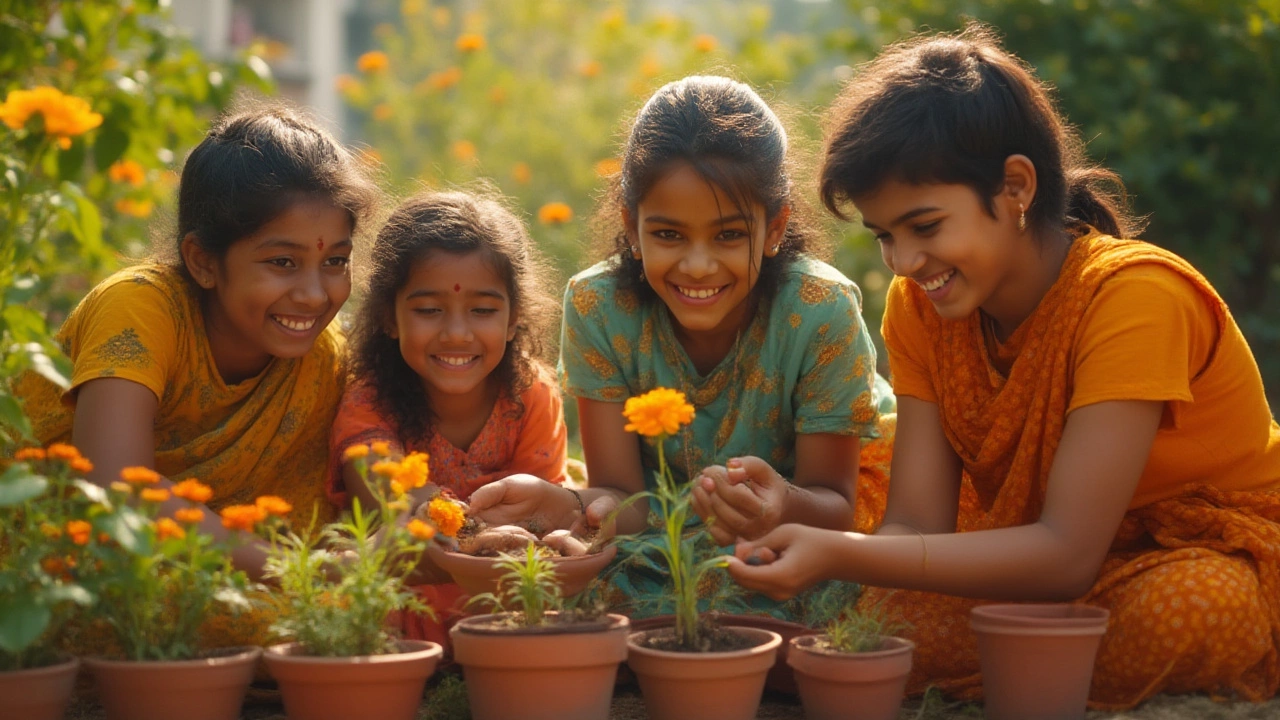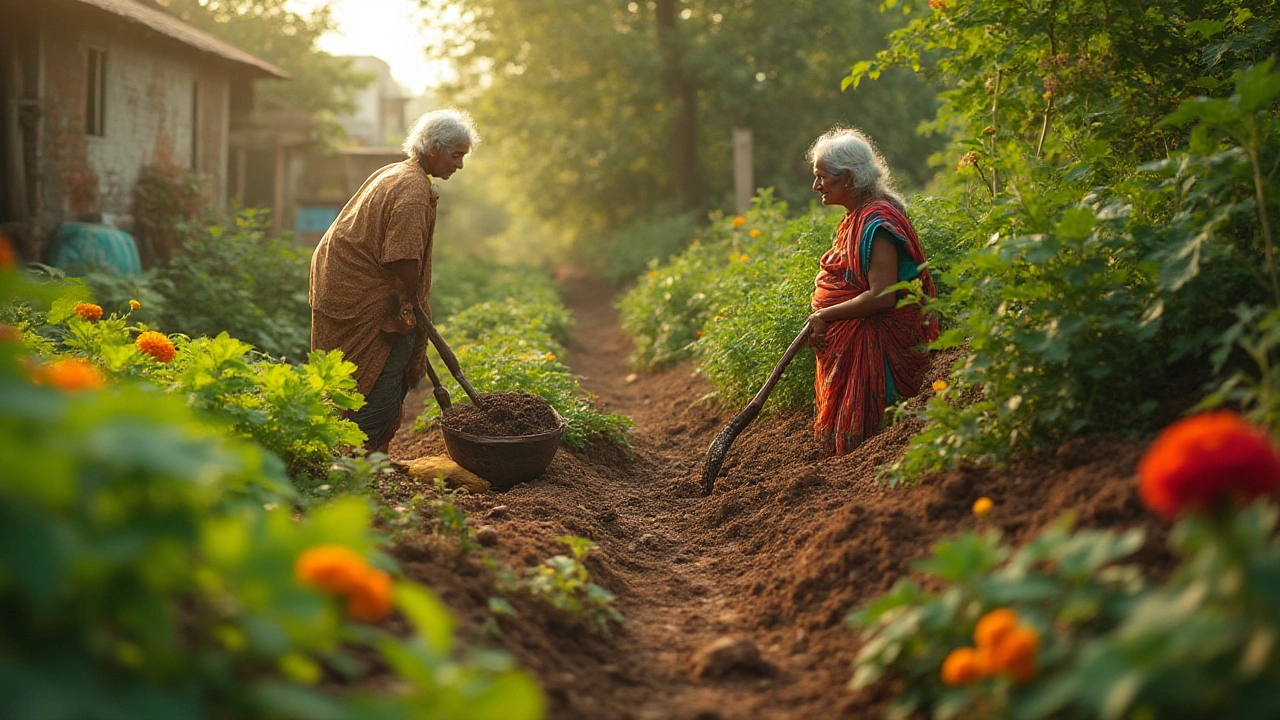Easiest Flower to Grow: Simple Picks for Any Garden
When talking about easiest flower to grow, a plant that blooms with minimal effort and suits most Indian climates. Also known as simple flower, it helps beginners see results quickly and builds confidence for larger projects. easiest flower to grow isn’t a fancy term—just a practical guide to start your green space without endless trial and error.
One related idea is container garden, a compact setup using pots or trays that lets you control soil and moisture. It’s handy for apartments or small balconies where space is tight. Another key player is drip irrigation, a low‑flow watering system that delivers water directly to plant roots. Finally, pay attention to soil moisture, the amount of water retained in the growing medium, crucial for preventing over‑ or under‑watering. These three tools shape how easily a flower can thrive.
Why These Flowers Are Perfect for Beginners
The first semantic triple is: "Easiest flower to grow encompasses low‑maintenance varieties". In practice, that means choosing species that need little fertilizer, tolerate a range of temperatures, and bounce back from occasional neglect. Marigold, for example, blooms bright even when the soil dries out a bit. Jasmine, another favorite, flourishes in both pots and ground beds, making it a versatile container garden candidate.
The second triple: "Container garden requires proper soil moisture management". When you use pots, the soil can dry faster than in a garden bed, so checking moisture daily with your finger or a simple meter saves the plant from wilting. Pairing a pot with a drip‑irrigation line means you set a timer, then forget about it—exactly what beginners love.
The third triple links drip irrigation to water efficiency: "Drip irrigation enables consistent soil moisture". A steady trickle keeps roots moist without flooding, which reduces root rot risk—a common mistake for new growers. Even a basic DIY drip system made from a perforated hose can make a big difference.
Now, let’s talk specific flowers that check all these boxes. Marigold (Tagetes spp.) tolerates heat, needs only occasional watering, and thrives in full sun. Its seeds sprout in 7‑10 days, giving fast gratification. Next up, Portulaca (also called moss rose) loves sunny spots, needs almost no water once established, and spreads quickly, covering containers with a carpet of pink or orange blooms.
If you prefer a fragrant option, consider Jasminum auriculatum, commonly known as Indian jasmine. It handles partial shade, tolerates occasional dry spells, and smells amazing when the evenings arrive. For a splash of blue, try the African violet (Saintpaulia), which does well indoors under moderate light and needs just enough moisture to keep the soil slightly damp.
All these flowers share a common attribute: they thrive on soil moisture that stays just above the dry point. The trick is to water when the top centimeter feels dry to the touch. Overwatering is worse than a little drought for most of these species.
Another practical tip is using a light, well‑draining potting mix. Adding coarse sand or perlite improves aeration, preventing waterlogging. A mix of 70% compost, 20% sand, and 10% peat works well for most easy‑grow varieties.
When you combine the right flower, a simple container garden, and a basic drip system, you create a self‑reinforcing loop. The flower stays healthy, you water less, and you enjoy more blooms. This relationship forms the fourth semantic triple: "Easy flower benefits from container garden and drip irrigation, which together ensure optimal soil moisture".
Even if you don’t set up a drip line right away, a watering can with a fine rose head can simulate the same gentle flow. Just pour slowly around the base of the plant, letting water seep into the soil instead of running off.
Seasonal timing also matters. In most of India, planting after the monsoon (late September to early October) gives you a moist start. If you’re in a hotter region, start a bit earlier to let seedlings establish before the peak summer heat.
Finally, don’t forget to deadhead spent blooms. Removing wilted flowers encourages the plant to produce new ones, extending the flowering period. It’s a simple habit that makes a big visual impact.
With these basics—choosing a low‑maintenance flower, using a container garden, managing soil moisture, and optionally adding drip irrigation—you’re set to enjoy a colorful garden without the usual headaches. Below you’ll find a curated list of articles that dive deeper into each of these steps, from watering schedules to soil recipes, giving you everything you need to turn your balcony or backyard into a thriving floral showcase.
Easiest Flowers to Grow: Beginner-Friendly Garden Blooms That Thrive Anywhere
Discover which flower is actually the easiest to grow, why that's true, and how to set yourself up for success—even if your thumb isn't green yet.
- manufacturing
- India
- food processing
- garden tips
- rice cultivation
- government schemes
- balcony garden
- urban gardening
- balcony gardening
- profitable business
- business ideas
- plastic manufacturing
- drip irrigation
- plant care
- steel manufacturing
- sustainable gardening
- startup ideas
- steel industry
- flower gardening
- textile manufacturers






